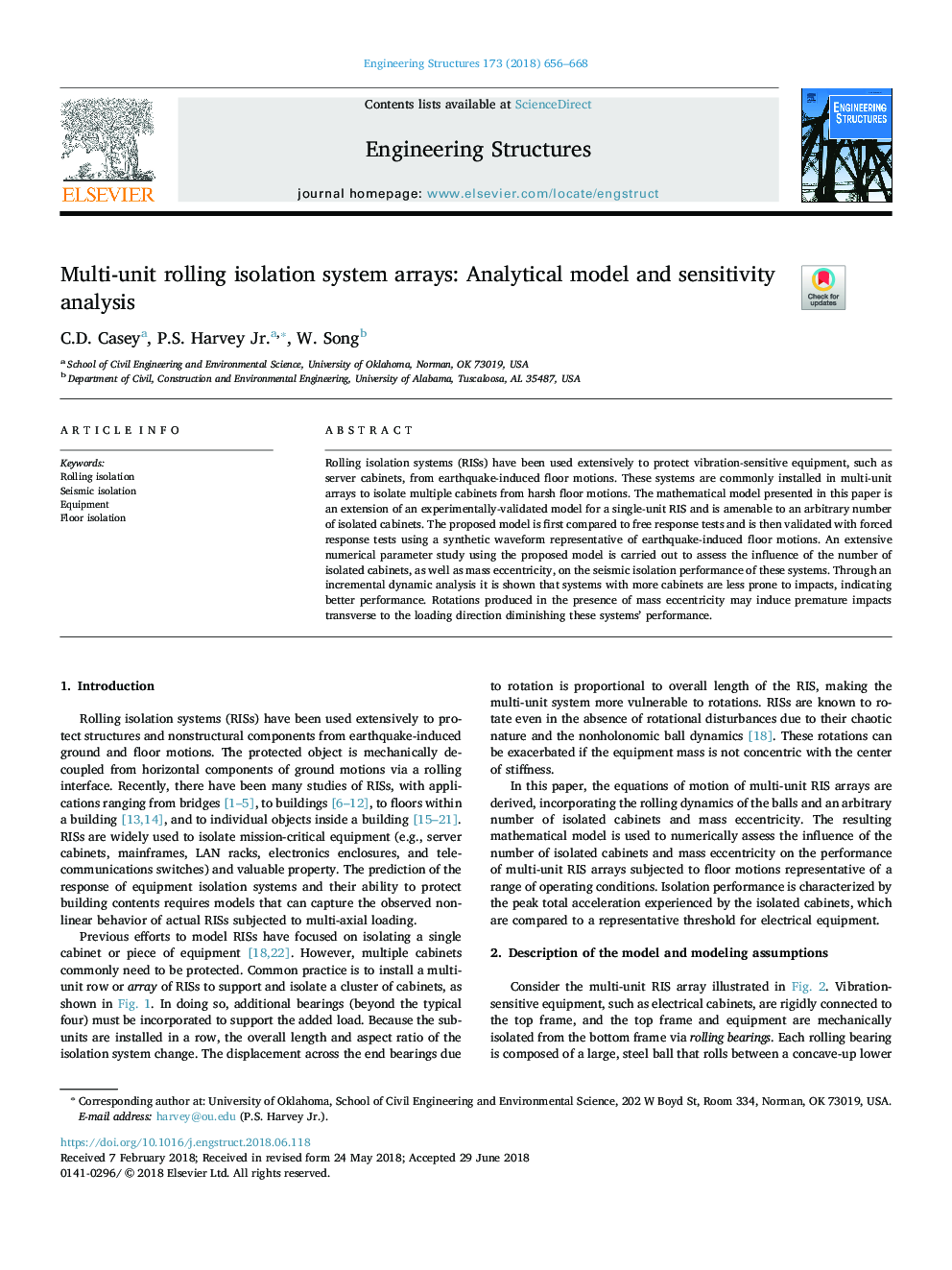| Article ID | Journal | Published Year | Pages | File Type |
|---|---|---|---|---|
| 6735697 | Engineering Structures | 2018 | 13 Pages |
Abstract
Rolling isolation systems (RISs) have been used extensively to protect vibration-sensitive equipment, such as server cabinets, from earthquake-induced floor motions. These systems are commonly installed in multi-unit arrays to isolate multiple cabinets from harsh floor motions. The mathematical model presented in this paper is an extension of an experimentally-validated model for a single-unit RIS and is amenable to an arbitrary number of isolated cabinets. The proposed model is first compared to free response tests and is then validated with forced response tests using a synthetic waveform representative of earthquake-induced floor motions. An extensive numerical parameter study using the proposed model is carried out to assess the influence of the number of isolated cabinets, as well as mass eccentricity, on the seismic isolation performance of these systems. Through an incremental dynamic analysis it is shown that systems with more cabinets are less prone to impacts, indicating better performance. Rotations produced in the presence of mass eccentricity may induce premature impacts transverse to the loading direction diminishing these systems' performance.
Keywords
Related Topics
Physical Sciences and Engineering
Earth and Planetary Sciences
Geotechnical Engineering and Engineering Geology
Authors
C.D. Casey, P.S. Jr., W. Song,
